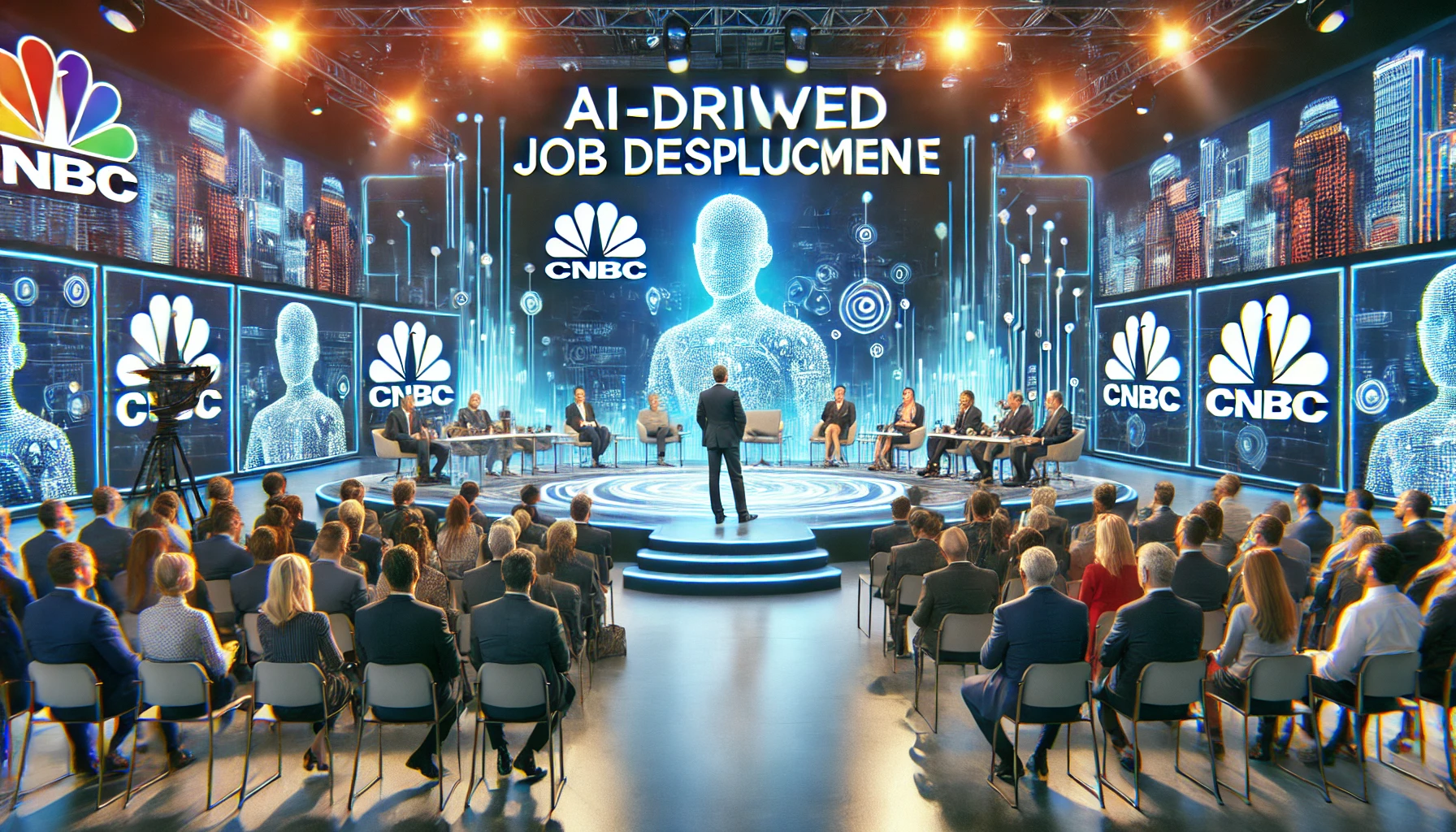Introduction
The rise of artificial intelligence (AI) has revolutionized industries across the globe, bringing with it both opportunities and challenges. One of the most pressing concerns is AI-driven job displacement. This issue was the focal point of discussion at CNBC’s ‘Converge Live’ panel, where John Hope Bryant, an esteemed entrepreneur and financial literacy advocate, shared his insights on the socioeconomic impact of AI on employment.
The Rise of AI and Automation
In the last decade, AI and automation have transformed the way businesses operate. From self-checkout machines in retail stores to AI-driven data analysis in finance, companies have increasingly adopted these technologies to improve efficiency and reduce costs. While AI offers numerous benefits, it also threatens millions of jobs globally, especially those in routine-based professions.
Bryant emphasized that AI is not just a futuristic concern but a present-day reality reshaping industries. He pointed out that while automation enhances productivity, it also has a significant impact on employment patterns, particularly for workers in low-skill and repetitive-task jobs.
AI’s Impact on Employment Sectors
Bryant provided an in-depth analysis of the sectors most affected by AI-driven job displacement.
1. Manufacturing and Industrial Work
Manufacturing was among the first industries to experience large-scale automation. Robotics and AI-driven systems now handle tasks that once required human labor, leading to job losses. Bryant explained that while this transition improves productivity, it necessitates reskilling initiatives to help displaced workers find new employment opportunities.
2. Retail and Customer Service
The retail sector has seen significant disruption due to AI-powered chatbots, self-service kiosks, and automated inventory management. Many traditional retail jobs have been replaced by technology, reducing employment opportunities for cashiers, sales associates, and customer service representatives.
3. Transportation and Logistics
The advent of self-driving technology and AI-powered logistics management systems has transformed transportation. Bryant discussed the potential long-term impact on truck drivers, delivery personnel, and taxi services as autonomous vehicles continue to develop.
4. Finance and Administrative Roles
AI has automated many financial and administrative processes, from fraud detection to risk assessment and document processing. While this enhances efficiency, it also reduces the need for human workers in data entry, accounting, and related fields.
Addressing AI-Driven Job Displacement
John Hope Bryant emphasized the importance of addressing AI-driven job displacement through proactive measures. He proposed several key solutions to mitigate the negative impact:
1. Reskilling and Upskilling Programs
Bryant advocated for investment in education and training programs that equip workers with skills relevant to the evolving job market. Fields such as data science, cybersecurity, and AI ethics are expected to see growing demand, providing new employment opportunities for displaced workers.
2. Public-Private Partnerships
Collaboration between governments, educational institutions, and businesses is essential to developing workforce strategies that align with technological advancements. Bryant highlighted the importance of creating policies that incentivize companies to invest in employee training rather than simply replacing workers with AI.
3. Encouraging Entrepreneurship and Innovation
AI may displace certain jobs, but it also creates opportunities for entrepreneurship. Bryant encouraged individuals to explore entrepreneurial ventures that leverage AI rather than being threatened by it. Small businesses and startups can use AI tools to enhance productivity and innovation.
4. Redefining the Workforce Mindset
Rather than fearing AI, Bryant urged individuals and organizations to embrace technology as a tool that augments human potential. He highlighted the need for a shift in mindset, where people focus on skills that AI cannot easily replicate, such as creativity, emotional intelligence, and strategic thinking.
Government and Policy Interventions
Governments play a crucial role in managing AI-driven job displacement. Bryant called for policy interventions such as:
- Universal Basic Income (UBI): Providing financial support to individuals affected by automation.
- Tax Incentives for Workforce Development: Encouraging businesses to invest in employee training.
- Stronger Labor Laws: Ensuring fair wages and job protection in the AI era.
Conclusion
John Hope Bryant’s discussion at CNBC’s ‘Converge Live’ panel shed light on the profound impact of AI-driven job displacement. While AI presents challenges, it also offers opportunities for economic growth, innovation, and job creation in new fields. Through reskilling initiatives, policy interventions, and a proactive approach to workforce development, society can navigate the AI revolution in a way that benefits both businesses and workers alike.
Bryant’s message was clear: AI is not the end of employment, but a transformation that requires adaptation. By embracing change and investing in human potential, we can create a future where technology and the workforce coexist harmoniously
